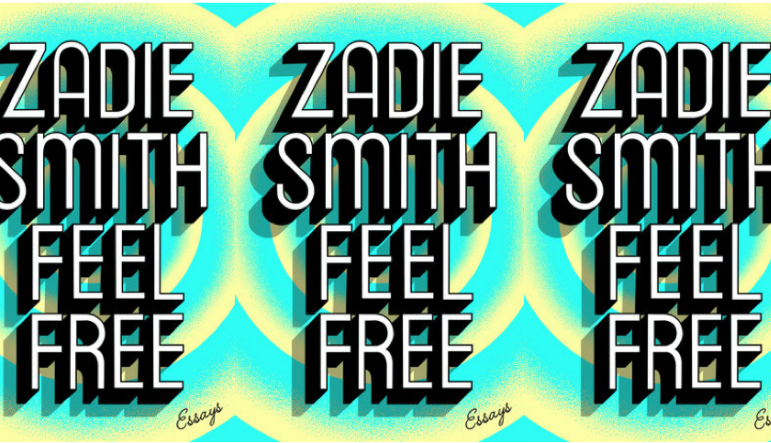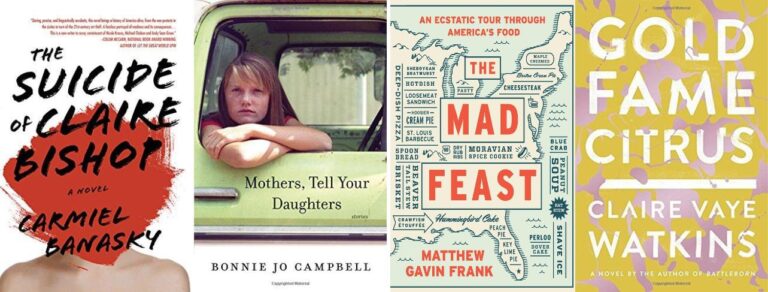Feel Free by Zadie Smith

Feel Free
Zadie Smith
Penguin Press | February 6, 2018
When writers of literary fiction leave the foundations of their craft—narrative structure, character development, plots, themes, motifs—to write essays, there is always some sense of pulling back the veil and offering a clearer picture of the writer herself. Zadie Smith, an author known best for her novels, already puts quite a lot of herself into her fiction; even so, when she takes to writing nonfiction, this sense of pulling back the veil does happen, and maybe even more so because of her straightforward writing style. Smith regularly publishes essays in Harper’s, The New Yorker, and The New York Review of Books, and these essays and more are gathered in her new collection Feel Free.
Beyond the beautiful cover, the most striking thing about the book itself is its size—for a book of contemporary essays, it is quite hefty at 464 pages. (It’s almost twice as long as Changing My Mind, her first essay collection.) Feel Free contains thirty-one essays, divided into five sections: In the World (politics and current events), In the Audience (music, film and television), In the Gallery (art), On the Bookshelf (books), and Feel Free (miscellaneous, personal essays). They vary in length and style, but the most notable variety of the collection is in the subject matter. The book displays, as essays often do, the breadth of the writer’s interests and abilities. Zadie Smith handles the many subjects with grace and wields her knowledge on each subject easily; she also is transparent to the point of admitting when she may not be all that knowledgeable about a given topic.
Good fiction writers may not always be good essayists, but in general they know how to write well and how to pay attention to key elements of the human experience. Smith writes in the foreword that essays rely on intimacy, because the knowledge presented is more personal than researched; it relies on the reader “agreeing” with the author about the experience. The reader is free to reject this premise if the connection is not there. Zadie Smith is a good essayist, so the connection is there; her writing remains engaging and readable, incredibly intelligent without being inaccessible. She draws creative connections in her essays, ending them in lovely and thought-provoking ways: “…The Social Network is not a cruel portrait of any particular real-world person called ‘Mark Zuckerberg.’ It’s a cruel portrait of us: 500 million sentient beings entrapped in the recent careless thoughts of a Harvard sophomore.” Further, her prose is clean and sharp, and nearly every paragraph has at least one sentence which is crafted masterfully enough to draw attention to itself: “But each library is a different kind of problem, and ‘the Internet’ is no more a solution for all of them than it is their universal death knell.”
As with any collection of this size, certain pieces resonated with me more than others. Whether this is because some of the essays are truly better or because of my interest (or lack) in the subject matter, I’m not sure; teasing out the subjective from the objective may be a useless endeavor while engaging with art anyway, as Smith explores in more than one essay. I wasn’t as moved by the essays about art pieces (although engaging with visual art is by nature difficult when doing so indirectly, through someone else’s words), but the essays about cultural figures struck me as excellent snapshots of both the individuals portrayed and their imprint on the writer. For example, she writes about Joni Mitchell: “When I listen to [her songs], I know I am in the debt of beauty, and I feel an obligation to repay that debt.”
Smith’s essays address similar themes as her fiction: notably, race and class. Race, especially the experience of being black in contemporary England and America, is a central theme in essays about Brexit, the film Get Out, and the comedy duo Key and Peele, but also finds its way into essays about raising children, engaging with art, and Italian gardens. I additionally enjoyed reading Feel Free for what it reveals about Smith’s thought process surrounding her novels; she shares on writing NW, how her own experience shaped On Beauty, and two essays—“Some Notes on Attunement” and “Dance Lessons for Writers”—offered some clarity about inspiration for characters in Swing Time. The final essay, “Joy,” is one of my favorite essays ever and is, I believe, the best in this collection.
Readers of Zadie Smith who have read some of her nonfiction previously will enjoy this collection immensely, as she expands her range and offers stunning cultural commentary through the present day. Readers of Smith only as a fiction writer will appreciate the insight these essays offer into her thought and writing processes, particularly of her recent novels. Finally, for readers who have never had the pleasure of reading Zadie Smith, or maybe haven’t even heard of her, Feel Free would be an excellent place to find one of the best contemporary writers writing at her best.


